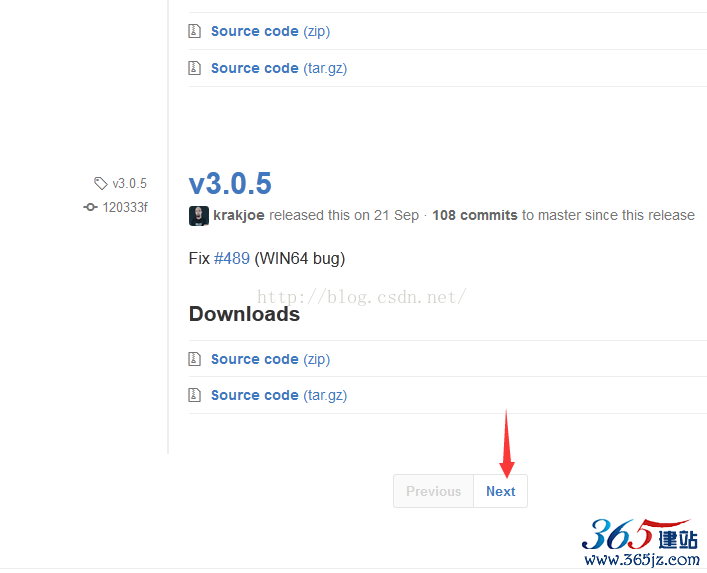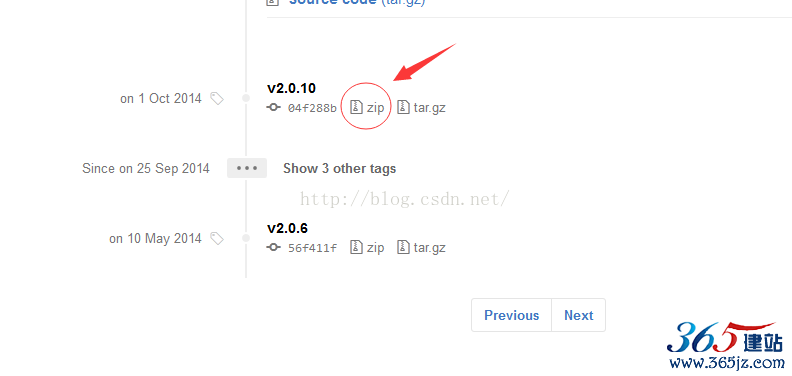PHP中fsockopen函数多线程的实现方法
PHP本身是不是支持多线程的,不过我们可以借助其他的方法来实现多线程,比如 shell 服务,比如 web 服务器,本文我们来讲讲这两个方法如何实现。需要的朋友可以来参考一下。
多线程是java中一个很不错的东西,很多朋友说在php中不可以使用PHP多线程了,其实那是错误的说法PHP多线程实现方法和fsockopen函数有关,下面我们来介绍具体实现程序代码,有需要了解的同学可参考。
当有人想要实现并发功能时,他们通常会想到用fork或者spawn threads,但是当他们发现php不支持多线程的时候,大概会转换思路去用一些不够好的语言,比如perl。
其实的是大多数情况下,你大可不必使用 fork 或者线程,并且你会得到比用 fork 或 thread 更好的性能。
假设你要建立一个服务来检查正在运行的n台服务器,以确定他们还在正常运转。你可能会写下面这样的代码:
代码如下:
<?php
$hosts = array("host1.sample.com", "host2.sample.com", "host3.sample.com");
$timeout = 15;
$status = array();
foreach ($hosts as $host) {
$errno = 0;
$errstr = "";
$s = fsockopen($host, 80, $errno, $errstr, $timeout);
if ($s) {
$status[$host] = "Connectedn";
fwrite($s, "HEAD / HTTP/1.0rnHost: $hostrnrn");
do {
$data = fread($s, 8192);
if (strlen($data) == 0) {
break;
}
$status[$host] .= $data;
} while (true);
fclose($s);
} else {
$status[$host] = "Connection failed: $errno $errstrn";
}
}
print_r($status);
?>
它运行的很好,但是在fsockopen()分析完hostname并且建立一个成功的连接(或者延时$timeout秒)之前,扩充这段代码来管理大量服务器将耗费很长时间。
因此我们必须放弃这段代码;我们可以建立异步连接-不需要等待fsockopen返回连接状态。PHP仍然需要解析hostname(所以直接使用ip更加明智),不过将在打开一个连接之后立刻返回,继而我们就可以连接下一台服务器。
有两种方法可以实现;PHP5中可以使用新增的stream_socket_client()函数直接替换掉fsocketopen()。PHP5之前的版本,你需要自己动手,用sockets扩展解决问题。
下面是PHP5中的解决方法:
它运行的很好,但是在fsockopen()分析完hostname并且建立一个成功的连接(或者延时$timeout秒)之前,扩充这段代码来管理大量服务器将耗费很长时间。
因此我们必须放弃这段代码;我们可以建立异步连接-不需要等待fsockopen返回连接状态。PHP仍然需要解析hostname(所以直接使用ip更加明智),不过将在打开一个连接之后立刻返回,继而我们就可以连接下一台服务器。
有两种方法可以实现;PHP5中可以使用新增的stream_socket_client()函数直接替换掉fsocketopen()。PHP5之前的版本,你需要自己动手,用sockets扩展解决问题。
代码如下:
<?php
$hosts = array("host1.sample.com", "host2.sample.com", "host3.sample.com");
$timeout = 15;
$status = array();
$sockets = array();
/* Initiate connections to all the hosts simultaneously */
foreach ($hosts as $id => $host) {
$s = stream_socket_client("
$
$host:80", $errno, $errstr, $timeout,
STREAM_CLIENT_ASYNC_CONNECT|STREAM_CLIENT_CONNECT);
if ($s) {
$sockets[$id] = $s;
$status[$id] = "in progress";
} else {
$status[$id] = "failed, $errno $errstr";
}
}
/* Now, wait for the results to come back in */
while (count($sockets)) {
$read = $write = $sockets;
/* This is the magic function - explained below */
$n = stream_select($read, $write, $e = null, $timeout);
if ($n > 0) {
/* readable sockets either have data for us, or are failed
* connection attempts */
foreach ($read as $r) {
$id = array_search($r, $sockets);
$data = fread($r, 8192);
if (strlen($data) == 0) {
if ($status[$id] == "in progress") {
$status[$id] = "failed to connect";
}
fclose($r);
unset($sockets[$id]);
} else {
$status[$id] .= $data;
}
}
/* writeable sockets can accept an HTTP request */
foreach ($write as $w) {
$id = array_search($w, $sockets);
fwrite($w, "HEAD / HTTP/1.0rnHost: "
. $hosts[$id] . "rnrn");
$status[$id] = "waiting for response";
}
} else {
/* timed out waiting; assume that all hosts associated
* with $sockets are faulty */
foreach ($sockets as $id => $s) {
$status[$id] = "timed out " . $status[$id];
}
break;
}
}
foreach ($hosts as $id => $host) {
echo "Host: $hostn";
echo "Status: " . $status[$id] . "nn";
}
?>
我们用stream_select()等待sockets打开的连接事件。stream_select()调用系统的select(2)函数来工作:前面三个参数是你要使用的streams的数组;你可以对其读取,写入和获取异常(分别针对三个参数)。stream_select()可以通过设置$timeout(秒)参数来等待事件发生-事件发生时,相应的sockets数据将写入你传入的参数。
下面是PHP4.1.0之后版本的实现,如果你已经在编译PHP时包含了sockets(ext/sockets)支持,你可以使用根上面类似的代码,只是需要将上面的streams/filesystem函数的功能用ext/sockets函数实现。主要的不同在于我们用下面的函数代替stream_socket_client()来建立连接:
代码如下:
<?php
// This value is correct for Linux, other systems have other values
define('EINPROGRESS', 115);
function non_blocking_connect($host, $port, &$errno, &$errstr, $timeout) {
$ip = gethostbyname($host);
$s = socket_create(AF_INET, SOCK_STREAM, 0);
if (socket_set_nonblock($s)) {
$r = @socket_connect($s, $ip, $port);
if ($r || socket_last_error() == EINPROGRESS) {
$errno = EINPROGRESS;
return $s;
}
}
$errno = socket_last_error($s);
$errstr = socket_strerror($errno);
socket_close($s);
return false;
}
?>
现在用socket_select()替换掉stream_select(),用socket_read()替换掉fread(),用socket_write()替换掉fwrite(),用socket_close()替换掉fclose()就可以执行脚本了!
PHP5的先进之处在于,你可以用stream_select()处理几乎所有的stream-例如你可以通过include STDIN用它接收键盘输入并保存进数组,你还可以接收通过proc_open()打开的管道中的数据。
下面来分享一个PHP多线程类
代码如下:
class thread {
var $hooks = array();
var $args = array();
function thread() {
}
function addthread($func)
{
$args = array_slice(func_get_args(), 1);
$this->hooks[] = $func;
$this->args[] = $args;
return true;
}
function runthread()
{
if(isset($_GET['flag']))
{
$flag = intval($_GET['flag']);
}
if($flag || $flag === 0)
{
call_user_func_array($this->hooks[$flag], $this->args[$flag]);
}
else
{
for($i = 0, $size = count($this->hooks); $i < $size; $i++)
{
$fp=fsockopen($_SERVER['HTTP_HOST'],$_SERVER['SERVER_PORT']);
if($fp)
{
$out = "GET {$_SERVER['PHP_SELF']}?flag=$i HTTP/1.1rn";
$out .= "Host: {$_SERVER['HTTP_HOST']}rn";
$out .= "Connection: Closernrn";
fputs($fp,$out);
fclose($fp);
}
}
}
}
}
项目情况:
要同步300W+的用户数据到qcloud,只能每次一个curl同步,大概每秒同步3个,算下来同步完300W数据估计要10天+,所以想到用多线程解决。
方案1:
用c++写多进程方案,fork多个进程出来解决。主线程负责读取/存储数据,子线程负责curl。
方案2:
用php写多进程方案,同方案1.主线程读取,子线程curl。
但是由于php没有多进程,不能直接操控线程/进程。所以只能依赖于linux来实现多进程。
php函数pcntl_fork()可以创建进程,等同于linux的fork。
和fork不同的是,pcntl_fork返回的0是子进程,返回的id是子进程的pid(而fork是父进程返回0,子进程返回ppid).
注意pcntl_fork()函数必须要在linux上面才行,据说要加载pcntl.so模块,但貌似不加载也行。
方案3:
php+shell模拟多线程
例如:test.php文件实现了项目所需功能(包含数据库读写和curl)
再写一份shell如下,保存为start.sh:
#!/bin/bash //指定bash,必须
for(( i=0; i<20; i++))
do
php test.php & //执行test.php,&符号的意思是把该操作放在后台执行,这样shell就可以继续执行下一步sleep命令了。如果没有这个符号,shell会阻塞在这里。
sleep 1s
done
最后执行该shell,sudo ./start.sh
shell会启动20个进程同时分别执行test.php
但是由于每个进程都相当于主进程,所以共同的资源不好控制,这个case中,共同的资源只有数据库,所以每次操作数据库我都加锁详见我另一篇文章。
因为相对于数据库操作基本都是每秒能解决,而curl连续发个几百个需要几十秒甚至更多,所以数据库加锁影响不大。
我们在做项目的时候,有些需求,特别是数据的响应处理需要花费大量的时间,由于php是一个短生命周期的脚本语言,到了默认的30秒,php的数据处理还没完成,php的生命周期就结束了。这时需要使用异步并发处理策略,也就是说,一次php调用可以发出的多个请求,这些请求不是按照顺序执行,而是可以异步并发执行的,一些请求用于在后台处理数据,一些请求用于接受后台响应状态,根据状态,与用户做一些简单的交互。但是问题来了,我们都知道php本身是不支持多线程的,那么应该怎么实现php的多线程呢?
一、php模拟实现多线程的三种方法
1、linux下的php多线程
下面所讲的东西是源自php的pcntl_fork函数.因为这个函数依赖操作系统fork的实现,所以本文所讲的东西只适用于linux/unix。那么先看看这个函数的用法吧.php手册上是这么说的:
<?php
$pid = pcntl_fork();
if ($pid == -1) {
die('could not fork');
} else if ($pid) {
// we are the parent
pcntl_wait($status); //Protect against Zombie children
} else {
// we are the child
}
?>
通过pcntl_fork创建一个子进程,如果返回值是-1的话,那么说明子进程创建失败.创建成功的进程id会返回给父进程,0返回给子进程.不好理解吧,所以应该这样写:
<?php
$pid = pcntl_fork();
if($pid == -1){
//创建失败咱就退出呗,没啥好说的
die('could not fork');
}
else{
if($pid){
//从这里开始写的代码是父进程的,因为写的是系统程序,记得退出的时候给个返回值
exit(0);
}
else{
//从这里开始写的代码都是在新的进程里执行的,同样正常退出的话,最好也给一个返回值
exit(0);
}
}
?>
这样一改好理解多了,如果你父进程希望知道子进程正常退出的话,可以加上前面的pcntl_wait。
2.通过stream_socket_client 方式
function sendStream() {
$english_format_number = number_format($number, 4, '.', '');
echo $english_format_number;
exit();
$timeout = 10;
$result = array();
$sockets = array();
$convenient_read_block = 8192;
$host = "test.local.com";
$sql = "select waybill_id,order_id from xm_waybill where status>40 order by update_time desc limit 1 ";
$data = Yii::app()->db->createCommand($sql)->queryAll();
$id = 0;
foreach ($data as $k => $v) {
if ($k % 2 == 0) {
$send_data[$k]['body'] = NoticeOrder::getSendData($v['waybill_id']);
} else {
$send_data[$k]['body'] = array($v['order_id'] => array('extra' => 16));
}
$data = json_encode($send_data[$k]['body']);
$s = stream_socket_client($host . ":80", $errno, $errstr, $timeout, STREAM_CLIENT_ASYNC_CONNECT | STREAM_CLIENT_CONNECT);
if ($s) {
$sockets[$id++] = $s;
$http_message = "GET /php/test.php?data=" . $data . " HTTP/1.0\r\nHost:" . $host . "\r\n\r\n";
fwrite($s, $http_message);
} else {
echo "Stream " . $id . " failed to open correctly.";
}
}
while (count($sockets)) {
$read = $sockets;
stream_select($read, $w = null, $e = null, $timeout);
if (count($read)) {
/* stream_select generally shuffles $read, so we need to
compute from which socket(s) we're reading. */
foreach ($read as $r) {
$id = array_search($r, $sockets);
$data = fread($r, $convenient_read_block);
if (strlen($data) == 0) {
echo "Stream " . $id . " closes at " . date('h:i:s') . ".<br> ";
fclose($r);
unset($sockets[$id]);
} else {
$result[$id] = $data;
}
}
} else {
/* A time-out means that *all* streams have failed
to receive a response. */
echo "Time-out!\n";
break;
}
}
print_r($result);
}
3、通过多进程代替多线程
function daemon($func_name,$args,$number){
while(true){
$pid=pcntl_fork();
if($pid==-1){
echo "fork process fail";
exit();
}elseif($pid){//创建的子进程
static $num=0;
$num++;
if($num>=$number){
//当进程数量达到一定数量时候,就对子进程进行回收。
pcntl_wait($status);
$num--;
}
}else{ //为0 则代表是子进程创建的,则直接进入工作状态
if(function_exists($func_name)){
while (true) {
$ppid=posix_getpid();
var_dump($ppid);
call_user_func_array($func_name,$args);
sleep(2);
}
}else{
echo "function is not exists";
}
exit();
}
}
}
function worker($args){
//do something
}
daemon('worker',array(1),2);
二、真正实现php多线程的方法



下一页找到版本2的
下载下来,这个v2 才是php5才可以使用的
下载下来,安装:
或者,您直接这样下载:
cd /tools
wget https://github.com/krakjoe/pthreads/archive/v2.0.10.zip
unzip v2.0.10.zip
cd pthreads-2.0.10
/usr/local/php/bin/phpize
./configure --with-php-config=/usr/local/php/bin/php-config
make
make install
注意:您的php 在编译的时候需要开启 –enable-maintainer-zts
./configure --prefix=/usr/local/php --disable-fileinfo --enable-fpm --with-config-file-path=/etc --with-config-file-scan-dir=/etc/php.d --with-openssl --with-zlib --with-curl --enable-ftp --with-gd --with-xmlrpc --with-jpeg-dir --with-png-dir --with-freetype-dir --enable-gd-native-ttf --enable-mbstring --with-mcrypt=/usr/local/libmcrypt --enable-zip --with-mysql=/usr/local/mysql --without-pear --enable-maintainer-zts
vim /etc/php.ini
添加
extension=pthreads.so
重启php
/etc/init.d/php-fpm restart
如对本文有疑问,请提交到交流论坛,广大热心网友会为你解答!! 点击进入论坛

